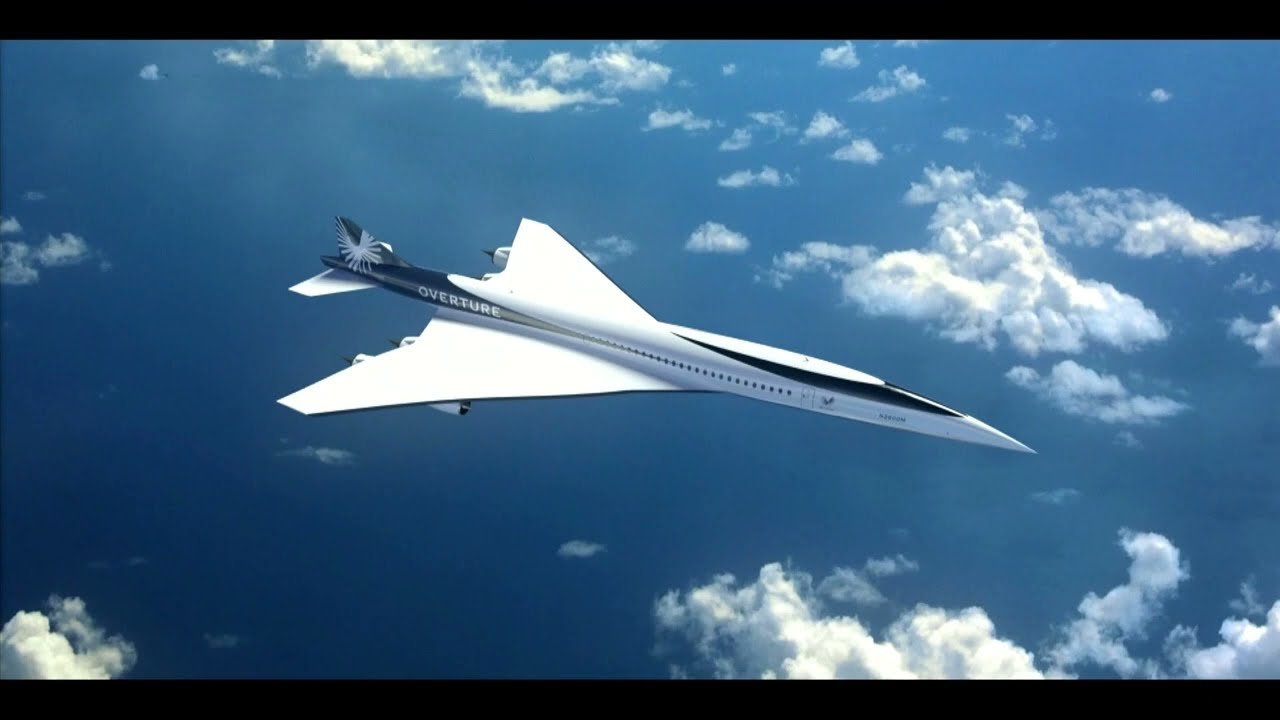In a groundbreaking achievement, Boom Supersonic, a company focused on reviving the era of commercial supersonic air travel,
has reached a significant milestone. On January 28, 2025, their XB-1 demonstrator jet—dubbed the “Son of Concorde“—successfully broke the sound barrier,
reaching a speed of Mach 1.122 (around 750 mph) during a test flight in Mojave, California. This moment marks a historic step forward in aerospace technology
and a bold move towards a new age of faster, more efficient air travel.
Key Points of the Achievement
- Successful Supersonic Flight: Boom’s XB-1 demonstrator broke the sound barrier during a test flight on January 28, 2025, at Mach 1.122 (750 mph), marking a key step in validating the technologies for commercial supersonic travel.
- Next Step: Overture: Boom’s upcoming commercial aircraft, Overture, promises to reduce travel time dramatically by flying at speeds of Mach 2.2, such as cutting New York to London flight duration to just 3.5 hours.
- Commitment to Sustainability: Boom Supersonic aims for a net-zero carbon operation for Overture, using sustainable aviation fuel (SAF) and implementing noise reduction technologies to mitigate environmental impacts.
- Airline Partnerships: Major airlines like United Airlines, American Airlines, and Japan Airlines have already committed to purchasing the Overture, signaling strong industry support for supersonic air travel.
- Projected Service Launch: Overture is slated to begin service in 2030, with test flights set to start in 2026, signaling the countdown to the next generation of air travel.
Breaking the Sound Barrier: A Major Achievement
The flight of the XB-1 demonstrator is a pivotal moment in the aviation industry. The test, conducted in the skies over Mojave, California, proved that Boom’s technology can once again push the boundaries of flight speed, just like the Concorde did decades ago. The XB-1 is a one-third-scale prototype of the company’s planned commercial airliner, Overture, and its successful supersonic flight is a major milestone in validating the technological innovations needed for commercial supersonic transport.
The XB-1 is designed to test key technologies, such as engines, aerodynamics, and materials, that will be incorporated into Boom’s full-sized Overture jet. This success demonstrates that the dream of commercial supersonic travel is no longer a distant aspiration but a tangible reality that is quickly becoming part of the modern aviation landscape.
The Overture Airliner: A New Era of Travel
Boom Supersonic next big leap will be the Overture, a full-sized supersonic airliner that promises to revolutionize the way we travel. The Overture will carry 65 to 88 passengers and aims to reduce travel times significantly, especially on long-haul routes.
This new aircraft promises not just speed, but comfort and efficiency. Boom has designed the Overture to maintain the luxurious flying experience of a commercial airliner while reducing the time spent in the sky. With speeds of up to Mach 2.2 (about 1,450 mph), the Overture will be the fastest airliner in the world—cutting cross-continental travel times in half.
Sustainability and Environmental Responsibility
One of the major concerns surrounding supersonic jets has always been their environmental impact. High-speed flights have historically been less fuel-efficient and contributed to greater noise pollution. Boom Supersonic, however, is taking significant strides to ensure that their supersonic jets
align with the growing environmental demands of the aviation industry.
- Sustainable Aviation Fuel (SAF): Boom’s Overture is designed to operate on SAF, a cleaner alternative to traditional jet fuel that reduces carbon emissions.
- Noise Reduction: The Overture will incorporate advanced technologies to reduce the sonic boom typically associated with supersonic flights, making it more environmentally friendly.
Boom’s commitment to sustainability doesn’t stop at fuel. They’ve also focused on reducing noise pollution, which has been a challenge for previous supersonic aircraft.
Strategic Partnerships with Leading Airlines
Boom Supersonic’s bold vision for the future of air travel has attracted the attention of major airlines around the world. United Airlines, American Airlines, and Japan Airlines have all made commitments to purchase the Overture aircraft when it enters service. These partnerships highlight the significant demand and interest in supersonic air travel, as airlines look
for ways to provide faster and more efficient travel options for their passengers.
With these partnerships, Boom is positioning itself as a leading player
in the aviation industry, and the Overture has the potential to redefine long-haul flights.
What’s Next for Boom Supersonic?
With the successful XB-1 test flight, Boom Supersonic is one step closer to achieving its goal of making supersonic commercial
flight a reality. As the company works toward launching the Overture,
the next few years will be crucial in testing and refining the technology that will power these jets.
Boom will continue to test its aircraft to ensure it meets the necessary safety, performance, and environmental standards. The company’s focus on sustainability and partnerships with major airlines will be key to its success.
Stay Updated with Flavor of Stories
At Flavor of Stories, we’re always bringing you the latest updates
on the innovations and technologies that are shaping our world. The advent of supersonic travel is one such development that will revolutionize how we travel,
and Boom Supersonic is leading the charge. Stay tuned for more in-depth coverage of the companies and advancements that are reshaping industries across the globe.






